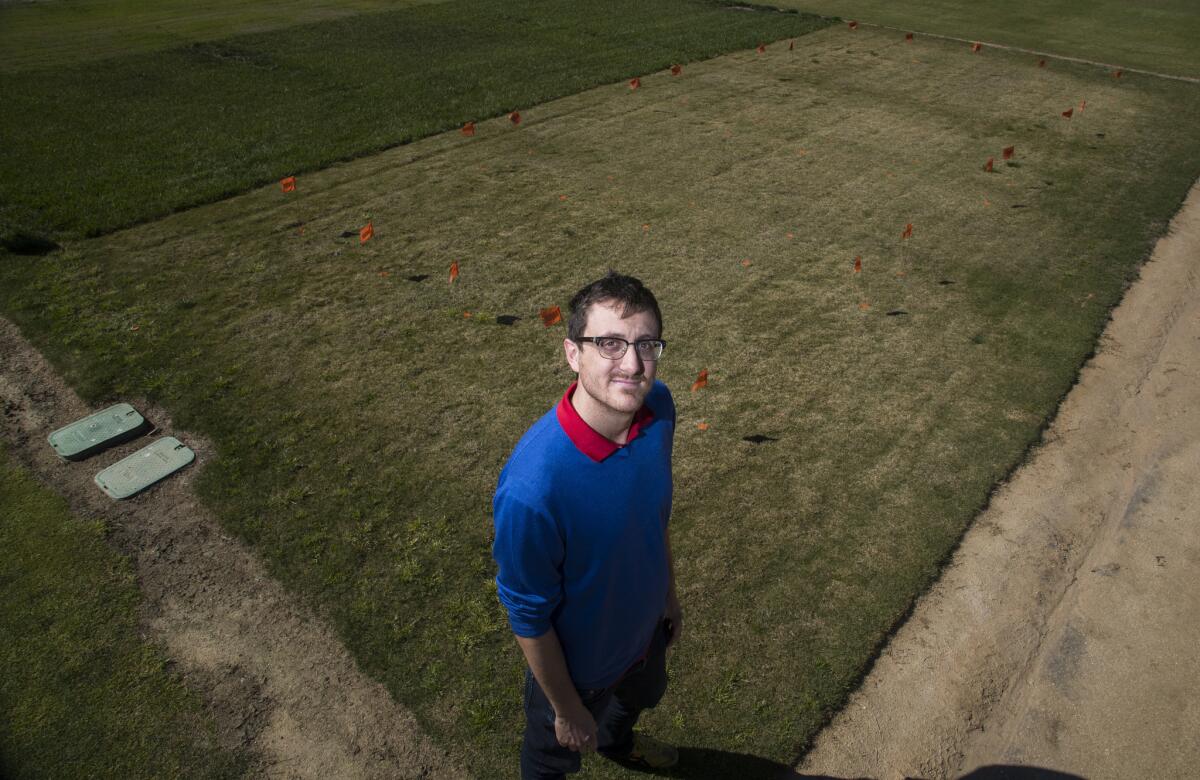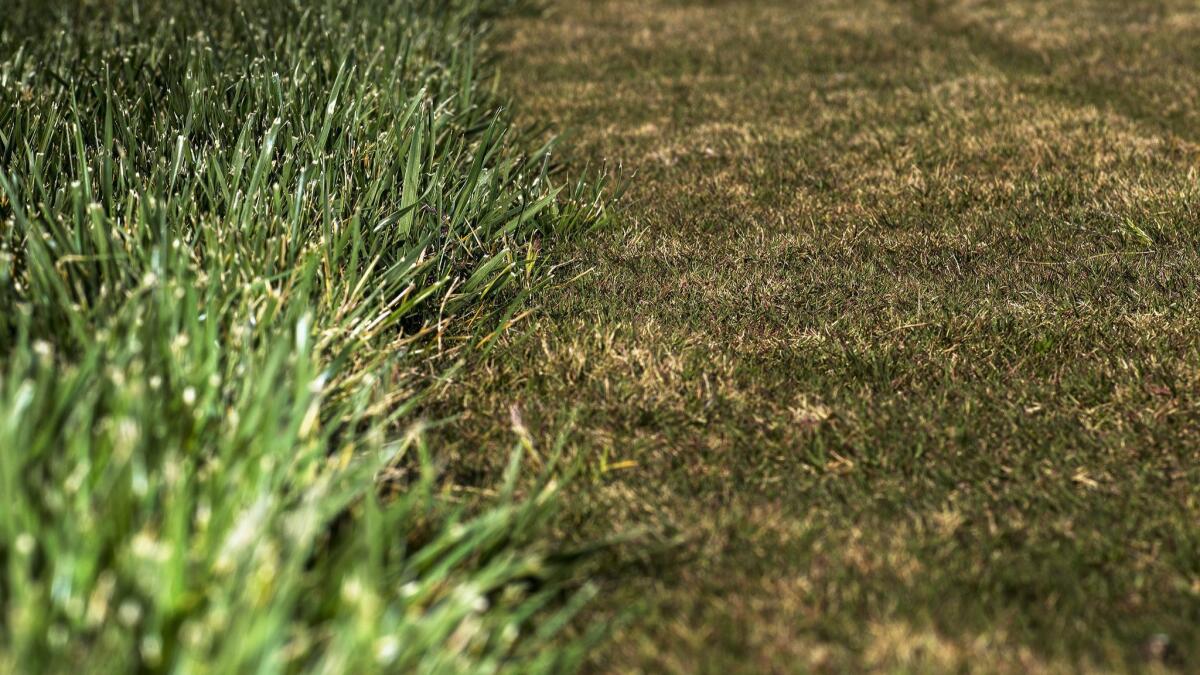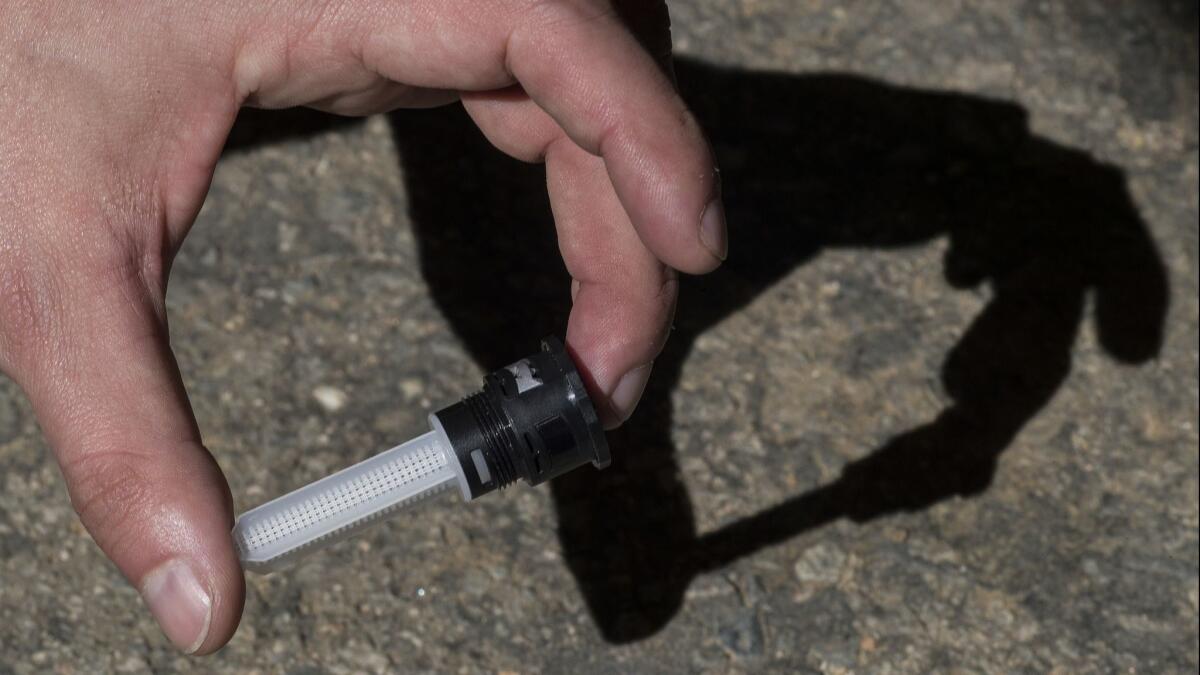5 ways to keep your lawn green — and still save water
Attention, Southern California lawn owners: Cast off your cone of shame!
Yes, your lawn uses water — more about that later — but when you sense judgment from the smug neighbor who replaced her lawn with colored rocks and succulents, don’t lower your eyes and slink inside.
Instead, stroll over, sadly toe a few rocks and note how your lawn is combating the “urban heat island effect” by making the neighborhood cooler and reducing the state’s demand for electricity, most of which — ahem — is produced using water.
“’Turf’ has become this four-letter word, but our position is that turf doesn’t waste water,” said Jim Baird, a turf grass specialist at UC Riverside’s Turfgrass Research Facility. “By removing turf, we’re creating a situation that requires more energy to cool the environment, and about two-thirds of energy production in the state requires water.”

The Environmental Protection Agency has found that air temperatures in hard-surface-areas of cities can be as much as 12 degrees warmer than in green areas, especially after sunset, said Baird. About 5% to 10% of community-wide demand for electricity is used to combat the heat island effect, he said.
So keeping your lawn can be very good for the environment, along with the more obvious benefits: erosion control, a reduction in dust, noise and fire danger, and that lovely aroma when it’s mowed.
But don’t congratulate yourself just yet. Most SoCal lawn owners waste a lot of water, due to faulty irrigation and maintenance, said Baird and turf grass researcher Marco Schiavon.
It’s possible to reduce your water consumption significantly and still have a healthy lawn, even in the midst of drought-like conditions, they said, but it means making some changes.
Here are their five top tips:
1. Less is best with watering
Step 1: Think “deficit” irrigation, instead of “optimal” irrigation. That means learning how to use your sprinkler timer and turning off your irrigation in the cool months between November and April. When it warms up, water deeply in the early morning or evening for 10 to 15 minutes a maximum of three or four days a week, depending on your lawn type (three days for warm-season grasses like Bermuda, four days for cool-season grasses like fescue). If runoff is a problem, divide your watering time into three-minute cycles, Baird said. “Your lawn won’t be super lush,” he said, “but it will be good enough.”
2. Choose the right turf

About 90% of SoCal lawns are planted with deep-green fescue grass, Baird said, but warm-season grasses like Bermuda or buffalograss need about 20% less water to stay green in hot, dry conditions. Think three days of watering each week for Bermuda grasses, versus four days for fescue.
Bermuda lawns aren’t popular because they go brown in the winter, when temperatures consistently dip below 80 degrees, but there are many varieties of Bermuda, Baird said, and UCR’s Turfgrass Research Facility is developing new varieties that stay green during its dormant season.
3. Feed your lawn
Lawns are greener and less weedy if fertilized four times a year. (“The best herbicide is a healthy turf stand,” Schiavon said.) Grass only responds to nitrogen, Baird said, so other amendments aren’t necessary. Baird recommends fertilizing fescue and other cool-season grasses around St. Patrick’s Day, Memorial Day, Labor Day and Halloween. Bermuda and other warm-season grasses should be fed around Easter, Fourth of July, Labor Day and Halloween.
4. Mow wisely
Sharpen your mower blades at least once a year (or make sure your gardener has sharp blades), because dull blades shred and stress the grass. Be sure you (or your gardener) is mowing to the right height — 3 to 4 inches for fescue/cool-season grasses and just 1.5 to 2 inches for Bermuda/warm-season grasses. And leave the clippings on the ground, for good, free fertilizer. “I still can’t believe all the gardeners I see collecting clippings to create more waste,” Baird said.
5. Maintain your sprinklers

People tend to water more when they see brown spots on their lawn, Schiavon said. What they don’t realize is that no above-ground irrigation system provides 100% distribution, so it’s better to just hand-water brown spots. Every spring, before you resume regular irrigation, clean or replace the filters in your sprinklers and be sure they’re working properly. Fixed-spray nozzles of the same size are more efficient than rotary type sprinklers, but if you’re replacing or installing a lawn, Schiavon says the most efficient system is sub-surface irrigation, a series of PVC pipes with holes, spaced about one foot apart, 4 to 6 inches deep.




